No home is maintenance-free.
Every building is subject to wear and tear from weather conditions and occupant usage. All building components have a design service life, which may be affected by environmental conditions and installation and maintenance measures. All building components require regular inspections and scheduled maintenance to maximize their performance and service life. The maintenance instructions set out below provide some guidelines for such inspections and maintenance. Windsor Surry Company & Windsor Willits Comany’s limited warranty is conditional upon the homeowner having undertaken proper maintenance on both WindsorONE Trim Boards and other components of the exterior envelope which are integral in water control. If any damage to trim occurs due to the homeowner’s failure to follow proper maintenance procedures, or to mitigate any damage, including damage caused by water penetration, the damage is excluded from warranty coverage.
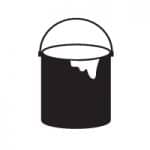
EXTERIOR PAINT
Exterior paint is applied primarily to protect the wood substrate. Paint coatings increase the durability of the Trim and must be checked annually for wear including cracking and peeling. Damage to the paint film must be corrected immediately. Trim installed on the south and west sides are subject to the most weathering, and dark or bright colors fade more rapidly on these exposures. Wood siding and trim require re-coating whenever the surface begins to fade, discolor, or peel. WindsorONE Trim Boards should be repainted in accordance with the paint manufacturer’s written instructions. Trim should be painted with the best available exterior acrylic latex coating applied at the manufacturer’s recommended spread rates.
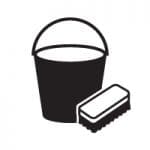
CLEANING
Remove dirt from the trim with a mild detergent, a gentle brush and a garden hose. Never use a pressure washer to clean the trim. Excessive water pressure can cause damage to the surface of the wood, and force water into the wall cavity. Over time, mildew and moss can grow on a shaded surface on any type of trim. A mild solution of bleach and water may remove this growth. Wall surfaces should be washed from the bottom upwards, otherwise the lower portions of the wall will become excessively stained as they absorb the contaminants washing down from above.
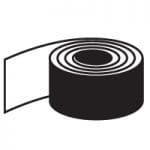
FLASHING
Flashing redirects water away from the face of the building and allows water to drain from behind the exterior wall finish. Flashing is normally installed at junctions of dissimilar materials and above door and window openings. Flashing may also be installed at each floor level to anticipate movement in the exterior finish as the building settles. Flashing requires periodic washing to remove grime and re-painting if corrosion of metal appears. Upon installation, flashing is sloped downwards to the outer edge in order to drain water. If, with building settlement, flashings begin to slope upward towards the building, repairs should be made to correct the slope which, ideally, should be 30 degrees.
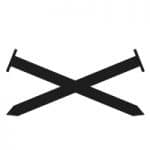
NAILS
Rusty nails indicate one of the following:
1- That the wrong nails were used.
2- The protective coating of the nail has broken down.
3- The wood is being subjected to prolonged periods of water.*
*If water is soaking into the wood trim, the moisture source must be eliminated and the trim checked for water damage. If the trim was installed by counter sinking nails, the putty used to fill nail holes should also be checked. If it has fallen out, the holes must be filled with an exterior grade wood putty designed for filling exterior nail holes. Rust should be scraped & a corrosion resistant coating should be applied to the nail heads. After it has dried, the holes should be filled.
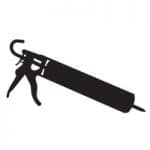
SEALANTS
Flexible sealing compounds are referred to as caulking. Caulking is used to seal gaps between dissimilar materials on the building exterior and to seal gaps or joints in exterior finishes. Buildings normally experience some settlement/ shrinkage of the building components which, in turn, cause settlement of flashing and damaged caulking. These areas should be immediately corrected as failure to do so will likely lead to water ingress into the building envelope. As a building moves during settlement, the caulking experiences considerable stress. Since caulking helps keep water out of the building envelope, it should be examined annually before the wet weather arrives. Any cracked, damaged, or loose caulking should be removed and replaced with exterior grade high performance acrylic-latex, silicone, acrylic, or urethane caulks or sealants.
The Building Envelope
is comprised of components and materials which separate and protect the interior of the building from adverse climate conditions such as water penetration, or heat and air flow. Exterior wood trim is only one component of the building envelope, but its optimal performance can depend on the entire building having been properly maintained. Exterior paint failure or decay in wood trim & siding is usually caused by water penetration, which may result from improper installation (see instructions above), or negligent maintenance (e.g., failure to repaint or maintain as described in this section).
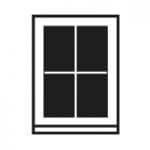
WINDOWS
The flashing and caulking used to prevent water from entering behind the window and trim should be checked annually. Most window designs incorporate a drainage track at the bottom of the window to collect any water. These tracks have weep holes to the outside to drain this water. These holes must be kept clean and can be maintained with a short piece of wire or a cotton swab.
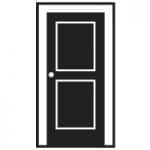
DOORS
Exterior doors are exposed to weather conditions and extreme temperature variations from inside to outside that can harm the door surface and its surrounding components. The flashing and caulking used to prevent moisture from entering behind door trim should be checked annually.

GUTTERS & DOWNSPOUTS
Gutters are installed at the roof perimeter to control the runoff of water. Gutters also prevent water from collecting at the foundation wall where it could seep into the basement or splash onto the wall surface. If gutters or down pipes are clogged with debris or ice, water damage can occur. Twice a year, check gutters, roof drains and downspouts for obstructions such as leaves and moss.
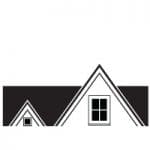
ROOF
Trim used around and on the roof should be checked to ensure it is not absorbing water due to inadequate clearances or snow loads. All penetrations through the roof such as skylights, plumbing stacks, vents, etc., need to be checked annually and resealed as necessary. Snow melting on the roof and then freezing in runoff at un-insulated roof eaves can lead to ice damming which, in turn, causes water to back up under shingles and results in a leak inside. When ice dams occur, the snow and ice should be removed from eaves and valleys.
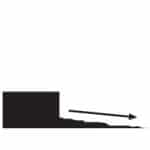
SITE DRAINAGE & GRADING
Water should not be allowed to pool against foundation walls. Site drainage patterns, such as sloping the soil away from the building, can prevent surface water from pooling against foundation walls. Flowerbeds should be graded so as not to interfere with drainage. A minimum clearance of 6 inches should separate the ground and the bottom of exterior wall cladding. Never allow soil or gravel to come in contact with exterior wood materials or finishes of the building. Review and adjust the spray pattern of sprinkler systems regularly to prevent spray onto walls.
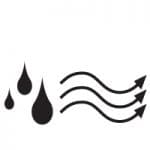
VENTILATION, CONDENSATION & RELATIVE HUMIDITY
The optimum year-round relative humidity level within residences is approximately 50%. Due to seasonal variations, this level is difficult to maintain without specialized equipment. Building Code standards require sealing the building against incidental leakage of warm air to the outdoors. Warm air holds moisture in suspension until contact with cold surfaces causes condensation, which may then lead to mold or mildew and moisture penetration into adjacent wood. Control of humidity and condensation requires proper heating and ventilation to exchange warm moist air for dry cool air from the outdoors.

CORNER BOARDS
Check them to ensure that all joints are tight and waterproofed & that there is no water damage on the ends where the trim is in proximity to decks, concrete or landscaping.
USING TRADITIONAL OR PROTECTED BOARDS?
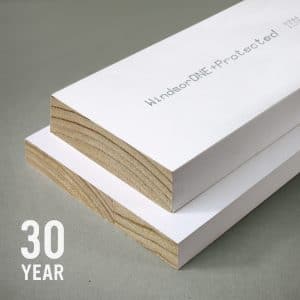
SEE THE 30YR WARRANTY FOR PROTECTED BOARDS
Protected Boards are made of real wood, finger jointed and coated with three coats of acrylic latex primer. All boards are protected with a 30 year warranty against rot, insects & mold. WindsorONE® Protected Trim Boards can be used for both interior and exterior use. The back of all WindsorONE® Protected Trim Boards contain an ink stamp (“WindsorONE+ Protected” or "WindsorONE Protected") to be easily identified.
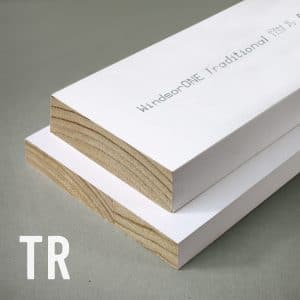
SEE THE TRADITIONAL WARRANTY
Traditional Boards are made of real wood, finger jointed and coated with three coats of acrylic latex primer. WindsorONE® Traditional Trim Boards can be used for both interior and exterior use. The back of all WindsorONE® Traditional Trim Boards contain an ink stamp (“WindsorONE” or "WindsorONE Traditional") to be easily identified.